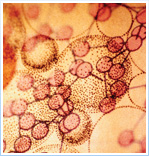Pfizer is interested in establishing alliances to develop and access:
- Computational methods to integrate, manage, visualize, and mine large-scale compound-centric datasets from published literature and patents
- Technology to expand NCE target space – orally bioavailable and cell penetrable peptides, and non-Ro5 compounds
- Natural product synthetic biology and screening technologies
- Ion channel modulator design and screening technologies
- Membrane protein structural biology technologies and capabilities, including ion channels, GPCRs and solute carrier proteins
- Computational methods for quantitative affinity prediction and molecular dynamics simulation
- New high efficiency synthetic transformations and novel flow chemistry approaches
- Systems/chemical biology technologies enabling mechanism determination for phenotypic screening hits
- Bioinformatic approaches to define target selectivity
- CH activation chemistry
- Novel synthetic methodology to access small conformationally constrained multifunctional templates
- Novel strategies for enhancing permeability of poorly absorbed molecules
- Novel fragment or compound collections validated for protein-protein interaction targets
- Identification of and access to novel sub-nanomolar cytotoxic agents
- New chemistry to develop disease imaging agents (e.g., plaques/AD, beta cells/T2D, angiogenesis/cancer
- Novel methodology and capabilities to enable 18F chemistry
- Biophysical techniques to enable rapid state dependent ion channel screening
- Novel receptor mediated and transporter mediated tissue targeting strategies
- High content and in silico approaches to predict small molecule toxicity
Not actively seeking partnering opportunities in:
- De novo in silico approaches without wet lab experimental validation
- Compound libraries with a limited track record of finding hits
